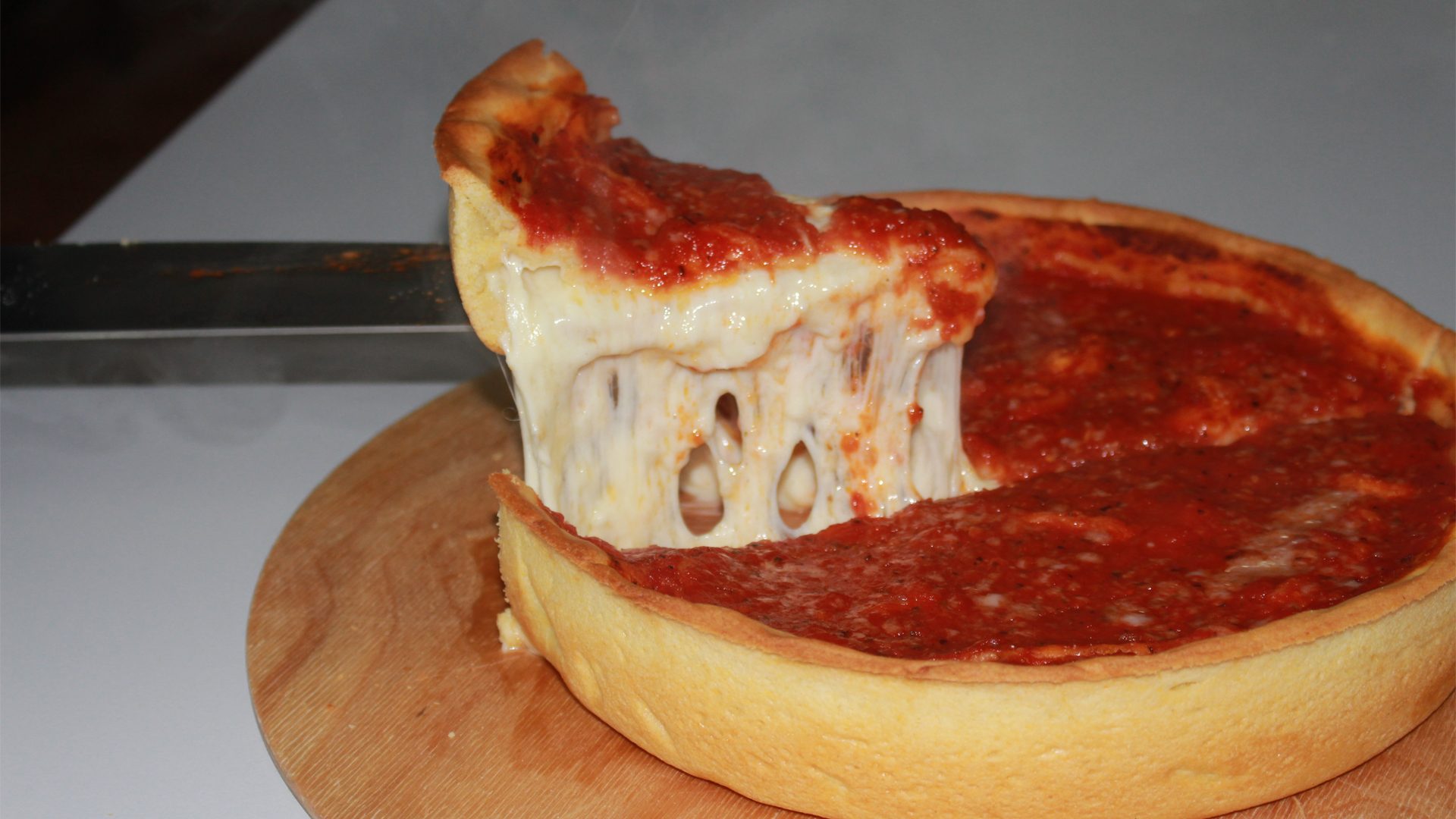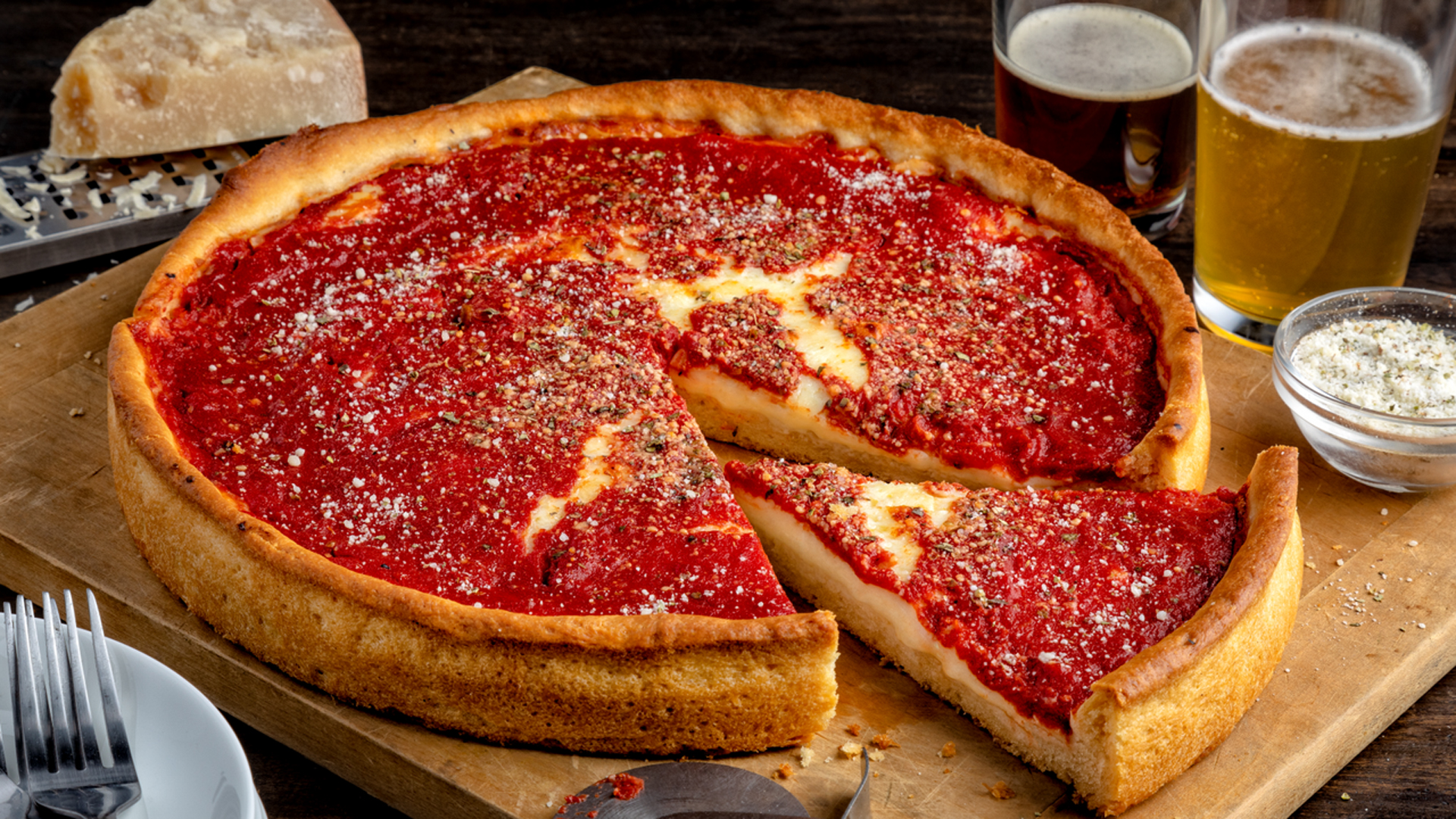When you think of a food Chicago is famous for and you might say hot dogs. Name two foods, and the second is likely deep dish pizza. New Yorkers sneer that it is nothing more than a casserole, but the windy city's contribution to Italian American cuisine is an iconic symbol that almost never was.
Chicago's Other Pizza Style
In the early 20th century, Italians from Campania - the Italian region where you’ll find Naples - settled in Chicago. They brought a tradition of flatbreads similar to other Italian enclaves in New York, Trenton, and New Haven, cities where America's earliest pizzerias were located.
These first Chicago pizza makers were not bakers like those on the east coast. Rather they were bar owners. This minor difference would have a huge impact on the different pizza cultures.
New York's pizzas are larger than Neapolitan pizzas because the bread ovens the bakers used were larger than the Neapolitan pizza ovens, creating the distinctive but similar pizza. In Chicago, since the early pizzas were not made by bakers, they were less likely to be using industrial bakery ovens. More importantly, the art of tossing dough by hand was lost on them. Instead, Chicago pizzaiolos rolled out their dough, inventing the flatbread tavern style pizza beloved by Chicagoans. Indeed, Chicago natives like food and culture writer Jason Diamond argue crispy thin crust pizza is more authentic than deep dish pie.
Tavern style thin crust pizza grew in popularity during the great depression. When prohibition was lifted and taverns reopened, the bar owners began baking thin pizzas to bring customers in. They rolled the dough flat, making an extra crispy pizza. Often the bar pies were free with drinks. Vito & Nicks, a pizzeria that still operates today and recently celebrated its 100th anniversary, first opened in the 1920s as a tavern but didn't serve their first tavern pie until 1946.

(Photo Credit: Tasting Table)
Everything Is Bigger in Texas
The taverns were what brought Texas businessman Ike Sewell to Chicago. He was in the liquor business, selling booze for the Standard Brands conglomerate. The midwest was his territory. Eventually he befriended Ric Riccardo, an Italian born restaurateur, and the two planned on opening a business together.
Sewell initially wanted to open a Mexican-style restaurant serving Tex Mex cuisine, then still relatively unknown in northern parts of the United States. The two businessmen tried out some recipes in an attempt to select a menu, but the Mexican food left Riccardo literally sick. It was then Riccardo, who was Italian, who suggested they open a pizzeria.
Sewell wanted to distinguish their pizza from the other thin crust pies available at other taverns and embarked on a mission to create a bigger, taller pie filled with toppings – perhaps better referred to as stuffings considering the depth of the pizza they eventually created.
They launched the concept in 1943 as Pizzeria Riccardo. The restaurant almost failed. The first problem was deep dish pizzas, cooked to order, baked for almost an hour. New York pizzas and the skinny tavern pie cooked up in just a few minutes, but patrons at Pizzeria Riccardo had to wait at least forty-five minutes for their enormous pies. It didn't help that the pizzeria was dark and off the beaten path. Finally, a local food critic wrote up the restaurant, and helped drive customers to the location keeping the restaurant operating.

Who Actually Invented Deep Dish?
Deep dish pizza is at the most basic level, pan-baked pie with very tall sides of crust. Other pan style pizzas include Detroit-style pizza, baked in a rectangular tin, but with lower sides, and the personal pizzas promoted by Pizza Hut. The hot metal crisps the exterior of the dough while leaving the interior soft.
Sewell long claimed to have "invented" deep dish, but he likely didn't create the actual recipe. His professional background was in alcohol sales, not cooking. So the question of who actually invented the recipe has always remained something of a disputed question.
One possible inventor of the recipe was Adolpho "Rudy" Malnati. Rudy had been a bartender at Riccardo's first restaurant, and eventually restaurant manager at the pizzeria. At one point he had even been promised an ownership share through a handshake agreement. Rudy's sons believe their father was instrumental in the creation of the deep dish recipe.
However, the deep dish recipe owes as much to Alice Mae Redmond as anyone else. She worked the line at the pizzeria for seventeen years before leaving to join Gino's East, a competitor that opened in 1966. Redmond had never been satisfied with the recipe, and worked to improve the dough, eventually taking the recipe she had created with her to Gino's East. Redmond actually worked at both Gino's and Sewell's restaurant for a time until the management found out, according to Steve Dolinsky in The Ultimate Chicago Pizza Guide: A History of Squares & Slices in the Windy City. They told her to choose.
Regardless of who invented the original recipe, Sewell became a huge advocate for the pies, and made sure his name will forever be associated with it.

(Photo Credit: Simply Recipes)
Deep Dish Grows Bigger
Following Riccardo's death, Sewell opened a second location with the help of Rudy Malnati and his son Lou, and called it Pizzeria Due. Pizzeria Riccardo was renamed Pizzeria Uno in 1955. All the while, Sewell continued working for the liquor company that originally brought him to Chicago. He finally retired from that job in 1962 and opened his long dreamed of Mexican restaurant.
Aaron Spencer, who owned two dozen Kentucky Fried Chicken franchises across New England, began talking with Sewell in the 1970s about offering Pizzeria Uno franchises. He opened a test restaurant in Boston. The success led Sewell to agree to wider franchising agreements and by 1980 the company was growing nationally, bringing "Chicago style deep dish" nationwide. Eventually there were 150 Pizzeria Unos, although currently there are just 77.
Pizzeria Uno's success also led to competitors, many of which started by people with connections to Sewell's original restaurant. Redmond, for one, joined Gino's East. Lou Malnati, who managed Pizzeria Due eventually opened a restaurant Lou Malnati's, now also a chain almost as large as Pizzeria Uno. Lou's younger half-brother opened Pizano's with four locations. Former employees also opened Delisi's Pizza and Louisa Pizza, and Bartoli's Pizza was opened by the grandson of the founder of Gino's East.

(Photo Credit: Pizzeria Uno via Facebook)
Reinventing Chicago's Deep Dish
Burt Katz started selling pizzas in 1963 when he bought a partial ownership of the Evanston, Illinois pizzeria, The Inferno. The Inferno was selling pan pizzas that were much thicker than a New York pie, but not quite as deep as those served at Pizzeria Uno.
Like Pizzeria Uno's deep dish, the sides of Katz's pie were crispy and the toppings were still more like fillings in the pizza shell. But Katz took the idea of a crispy crust to the extreme. He created what he eventually called the "caramelized crust." Two years later he sold his share of the pizzeria and opened a new one, Gulliver's.
Katz was a lot like the Johnny Appleseed of Chicago pizza. After running Gulliver's, he sold it to his business partner and opened Pequod's. At Pequod's, he perfected his caramelized crust, but soon sold that restaurant. He opened his final restaurant a few years later, first calling it Starback's, and then changing the name to Burt's Place when Starbucks objected to the trademark violation. Burt's Place is now operated by two pizzaiolo who Burt trained before his death.
The Inferno and Gullivers both have closed, but Pequod's and Burt's Place continue selling the unique Chicago style pies with the extra crispy crust. And as a nod to Chicagoans, Pequod now offers a thin crust pie too.
Ian MacAllen
Ian MacAllen is America Domani's Senior Correspondent and the author of Red Sauce: How Italian Food Became American. He is a writer, editor, and graphic designer living in Brooklyn. Connect with him at IanMacAllen.com or on Twitter @IanMacAllen.

